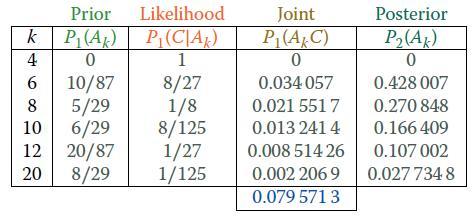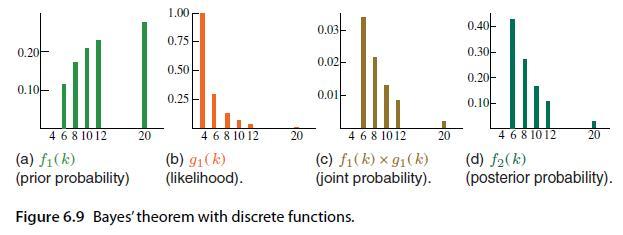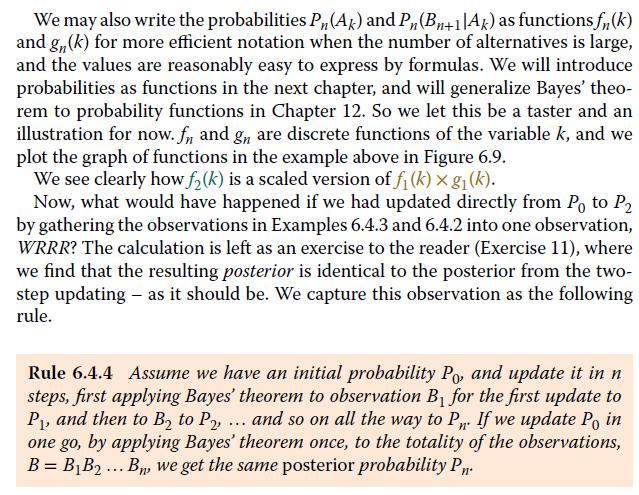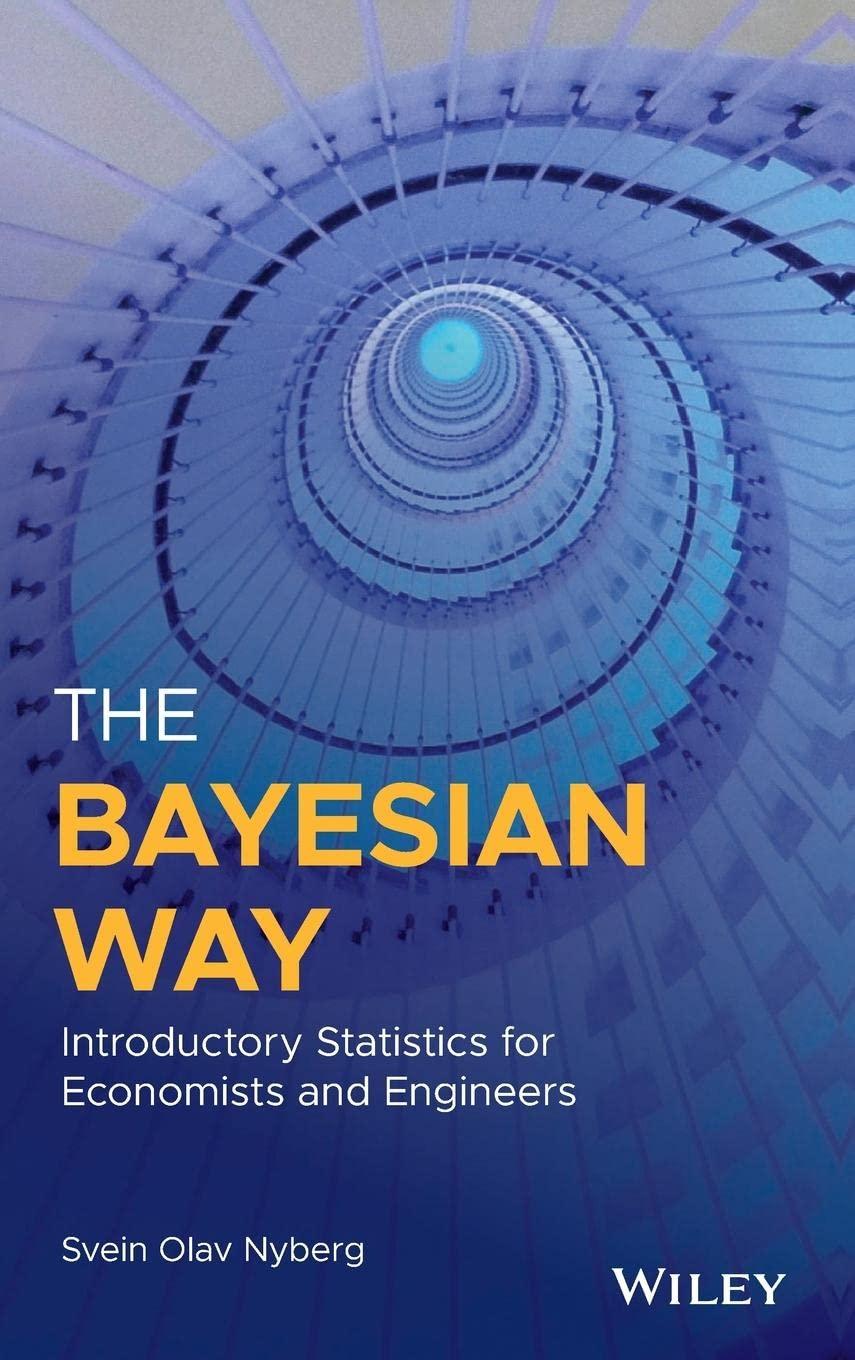Calculate the posterior probabilities for the dice in Examples 6.4.3 and 6.4.2 when you collect all the
Question:
Calculate the posterior probabilities for the dice in Examples 6.4.3 and 6.4.2 when you collect all the observations into one big observation for your one update, i.e. WRRR. Compare your one-step updated probability – let’s call it P′1 – to P2 from Example 6.4.3.What do you see?
Examples 6.4.2
We continue Example 6.3.5 by looking at the probability that Gamesmaster gets RRR, three reds, in the next three tosses.
Gamesmaster has previously tossed a die he picked at random, and he gotW.
The exploration is continuing with the same, unknown, die. Let B be the event “his first toss landed W”. Let further C be the event that his next three tosses land RRR.We are going to find the probability of C. In Figure 6.8, we follow up Figure 6.6 by showing the new event C = RRR.
Example 6.3.5
This is a continuation of Example 6.2.3, where we looked at Gamesmaster’s dice.

Example 6.2.3
Games master has six dice in a box: D4, D6, D8, D10, D12, and D20, all of them having four red sides and the remainder white. He picks a die at random, and tosses it, all out of view of the gamers and us. He will tell us if it landed red or white. What is the probability that it landed white?
Examples 6.4.3
Gamesmaster announces that he has tossed the die three more times. He got RRR. What are the new and updated probabilities of which die he picked?We expand the table from Example 6.4.2 by a posterior column, and find:


Step by Step Answer:

The Bayesian Way Introductory Statistics For Economists And Engineers
ISBN: 9781119246879
1st Edition
Authors: Svein Olav Nyberg





